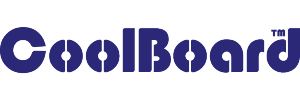common balance trainers explained
With balance training rightfully becoming a major focus in fitness and physiotherapy, there are a miriad of balance trainers and balance boards available, all claiming to do the same thing. On one hand the marketing is correct – any balance training will do you good. On the other hand, there are major differences between the types of balance board, what they will give you and the benefits you can expect, so here’s a quick rundown of what is available so you can make the educated choice…
Rocker Board
These can only rock or tilt in one direction and offer no roll or slide. These are very easy to get the hang of and get boring very quickly. Good for very early rehabilitation.
(£29.99 – £135)
Discs & Pads
These provide the cheapest balance training options but are very limited. Good for very early stage rehabilitation. Generally only big enough for one foot and provide some tilt on an unstable surface. People are often put off by the lack of a solid surface to stand on.
(£19.99 – £99.99)
Wobble Board
As found in most physiotherapists. These can rock or tilt in all directions. But they cannot roll or slide at all. Most have a very close stance, and the movement is very ‘on/off’ and not very satisfying, so they can feel both difficult and boring at the same time – a physio’s nightmare.
(£18.99 – £135)
By using CoolBoard with our Easy Start Balance Disc it becomes the world’s best wobble board. You get the good stance and solid platform of CoolBoard, combined with the adjustability and more forgiving and enjoyable movement of the inflatable Disc. The 40 cm Disc is more stable – perfect for standing desks and the infirm / nervous, while the 30 cm Disc gives a more nimble movement – perfect for everyday balance training and ideal progression if you want to try more movement in the future.
Bosu
Basically a large disc or half gym ball attached to a surface. Provides similar movement to a wobble board with a bigger platform and more versatility.
(£124.66 – £213.13)
We believe CoolBoard on a Disc is better and more versatile.
Balance board on a Roller
There can rock or tilt in one direction, and can roll or slide in the same direction. These are fairly easy to get the hang of and get boring fairly quickly. Some manufacturers use a roller that is conical at the ends. This gives a degree of tilt in the toe – heel direction, but still no slide or roll.
Some models can be used on a Disc as a wobble board.
(£29.99 – £299.99)
Balance board on a Ball
CoolBoard on the ball gives full movement – rock / tilt, and roll / slide in all directions. It takes a bit of practice to get the hang of as you learn and your body develops – which is good for you and a lot of fun.
CoolBoard can also be used on a Disc as a better wobble board.
Most people find getting the hang of being on the Ball takes using it a couple of times a day for 5 – 10 minutes over 2 to 5 days. Once you do get the hang of CoolBoard it is always fun and addictive to get back on. This means it will get far more use for far longer, giving you far more benefits.
(£129.95 – £229.95)
So there you go! If you want a simple device for early rehab you can get a cheap Rocker or Wobble Board, but physios agree – CoolBoard on the Disc is far better, and if you want full balance training, forget the one-dimensional roller and get on the Ball!



